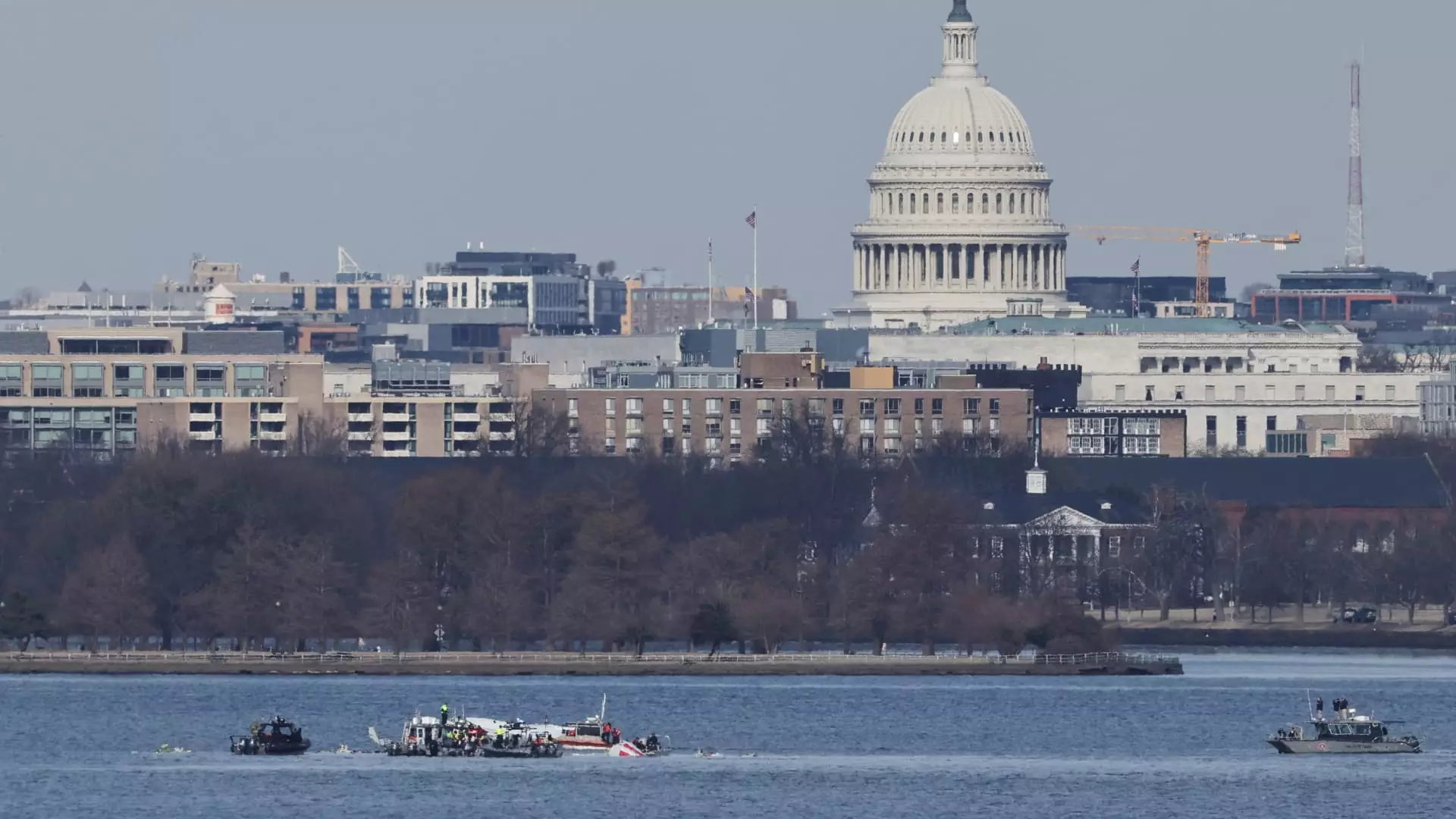On a fateful Wednesday night, a tragic accident unfolded over the Potomac River, claiming the lives of all 67 individuals onboard an American Airlines flight and a military Black Hawk helicopter. The incident marks a significant moment in aviation history, being the deadliest U.S. air crash since 2001, raising numerous concerns about airspace safety, operational protocols, and regulatory oversight. As investigators sift through debris and recover vital data from flight recorders, the air travel community is left reeling, questioning how such a catastrophic collision could occur within one of the most heavily monitored airspaces in the United States.
The American Airlines regional flight, operated by PSA Airlines using a Bombardier CRJ-700 aircraft, was on its final approach to Reagan National Airport, cruising at approximately 300 feet just before 9 PM ET. Meanwhile, the Black Hawk helicopter, reportedly engaged in a routine proficiency training flight, was navigating through controlled airspace when the two vehicles collided. Eyewitness accounts and preliminary reports indicate a sudden and alarming sequence of events, culminating in a fireball that illuminated the Washington, D.C., skyline.
Flight safety regulations stipulate that helicopters in this area must maintain a maximum altitude of 200 feet—a standard meant to minimize risks in a geographical zone densely populated with both civilian and military air traffic. However, questions surrounding the actual altitude of the Black Hawk helicopter at the time of the collision have taken center stage in the investigation, inciting speculation and leading to new scrutiny of compliance with federal aviation statutes.
The Investigation Enters a Critical Phase
The National Transportation Safety Board (NTSB) has officially taken charge of the investigation, asserting the importance of methodical data collection and analysis in determining the causative factors of the crash. NTSB Chair Jennifer Homendy emphasized the necessity of thoroughness, remarking on the substantial amount of data already gathered but cautioning against drawing premature conclusions. This underscores the complexity and gravity of the situation, as both human error and system failures are being examined.
As investigators delve into flight data and cockpit voice records from both aircraft, attention is drawn to procedural protocols at Reagan National. Reports suggest that air traffic control staffing wasn’t regular due to decreased personnel, which could have contributed to a lapse in monitoring and coordination within the bustling airspace. Such oversights highlight an ongoing issue in the aviation sector: the reliability of staffing during peak operational periods and the potential implications for safety standards.
The Aftermath: Regulatory Changes Loom
As the investigation unfolds, the Federal Aviation Administration (FAA) has responded with immediate regulatory actions, implementing new flight restrictions for helicopters in the D.C. area. These changes, although necessary, reflect a reactive approach, raising questions about existing procedures and their efficacy in safeguarding lives. Historically, aviation safety has advanced owing to lessons learned from past tragedies, which can lead to comprehensive improvements in operational practices.
The collision’s fallout has reignited discussions surrounding air traffic control staffing shortages, which have long plagued the industry. With increasing air traffic and the potential for more complex interactions between various types of aircraft, the necessity for robust regulatory standards has never been more apparent. Lawmakers and regulators must address these issues proactively to restore confidence among the traveling public and to protect flight crews and passengers alike.
This crash brings to light the paradox of modern aviation—while incidents of this magnitude have become rare due to stringent regulations and enhanced safety training, the recent tragedy demonstrates that even established systems can fail. With air travel having consistently grown more complex, maintaining vigilance is essential.
As the NTSB continues its painstaking investigation, the aviation community and the families affected are left in a state of uncertainty. Aviation has evolved tremendously over the years, yet, this incident serves as a stark reminder of the potential for mishaps that remains in an industry characterized by its focus on safety.
In the end, understanding the causes behind the crash will not only offer closure to those impacted but will also serve as a catalyst for necessary changes that could prevent such catastrophic events in the future. The industry must learn from this harrowing experience to solidify a commitment to safety excellence, thereby ensuring that trust in air travel remains steadfast amidst ever-evolving challenges.



Leave a Reply